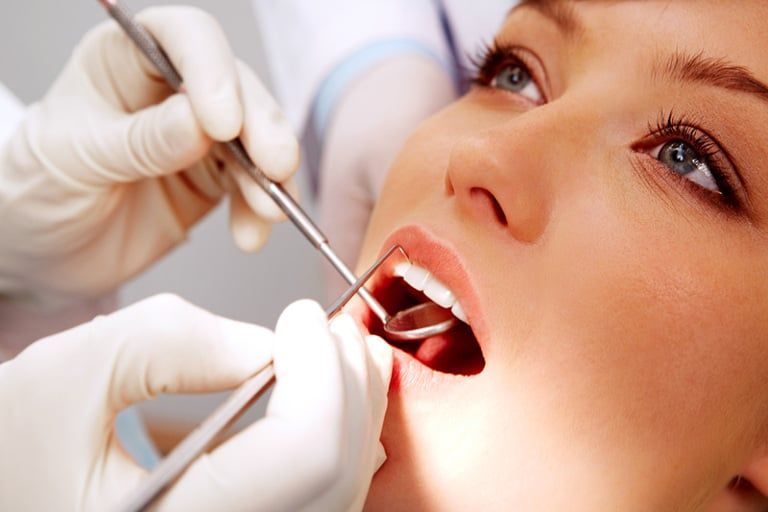Gum Disease Treatment: Stages, Procedures, and Maintaining Healthy Gums

About Periodontal Disease
Periodontal disease is an infection of the gums, which gradually leads to the destruction of the support of your natural teeth. This disease affects more than 80% of Americans by the age of 45.
Per the official CDC website:
A recent CDC report provides the following data related to the prevalence of periodontitis in the U.S.:
- 47.2% of adults aged 30 years and older have some form of periodontal disease.
- Periodontal disease increases with age, 70.1% of adults aged 65 years and older have periodontal disease.
Dental plaque is the primary cause of gum disease. Bacteria found in plaque produce enzymes and toxins which injure the gums. Injured gums turn red, swell and bleed easily.
If this injury is prolonged, the gums separate from the teeth, causing pockets (spaces) to form.
Plaque can also harden into a rough, porous substance known as calculus (tartar).
This can occur both above and below the gum line. As periodontal disease progresses, the supporting gum tissue and bone that holds the teeth in place deteriorate.
If left untreated, this leads to tooth loss. Pain is usually not present until damage from this disease is very advanced.
Stages Of Gum Disease
Gingivitis is an early stage of gum disease. Gingivitis develops as toxins, enzymes and other plaque byproducts by irritating the gums, making them tender, swollen and likely to bleed easily. Gingivitis generally can be stopped with proper oral hygiene and minor treatment from your dentist. If this is achieved, your gums can return to a healthy state.
Moderate gum disease is when the tooth's bone tissue starts to deteriorate. Periodontitis occurs when plaque byproducts destroy the tissues that anchor your teeth in the bone. The gums deteriorate and begin detaching themselves from the teeth forming gum pockets, which allows more plaque to collect below the gum line. This causes the roots of the teeth to become susceptible to decay. Generally, patients notice an increase in sensitivity to hot and cold and to touch.
Advanced periodontitis occurs when a major amount of gum and bone tissue has been lost and the teeth are losing more and more support due to the loss of periodontal ligament and bone. Some teeth are unable to be saved and must be extracted. If left untreated, advanced periodontitis can cause severe health problems elsewhere in the body.
What's Involved With A Root Planing Procedure?
Root planing, also known as a "deep cleaning" is a dental procedure performed when periodontal (gum) disease is detected. Signs of periodontal disease severe enough to warrant a deep cleaning include bleeding gums when brushing or flossing and a shrinking or receding gumline.
A deep cleaning removes plaque and tartar from tooth roots (below the gumline) and leaves behind a smooth, clean surface for gum tissue to re-attach itself to. If you are currently experiencing signs of periodontal (gum) disease, it is important that you call our office at (415) 392-1265 and talk to us about coming in for a dental exam. You can also Schedule An Appointment online which may help speed up the process.
Dr. Javadi is a very professional and my procedure was very easy with him. The healing process was very fast and easy with minimal pain.
- Denise S.